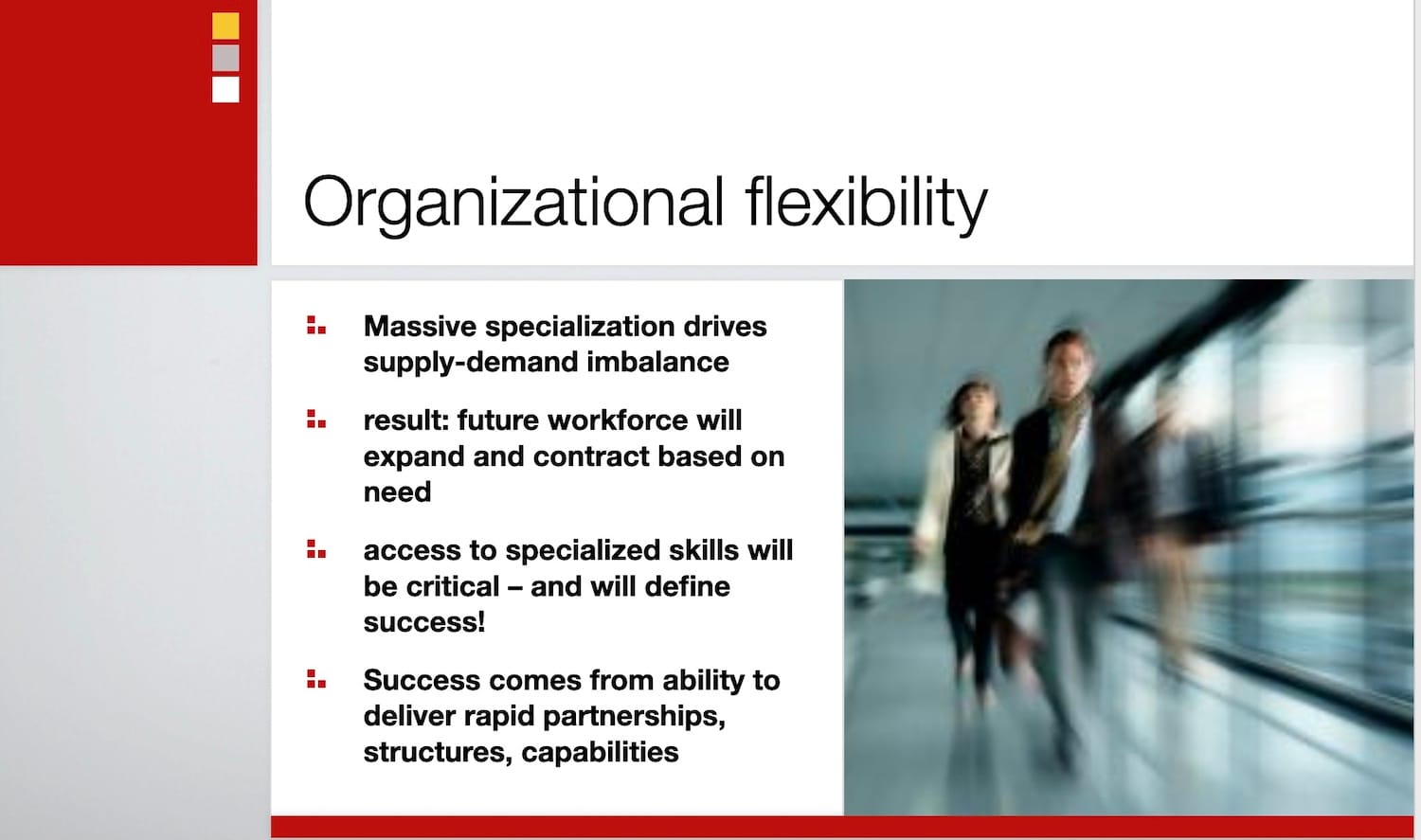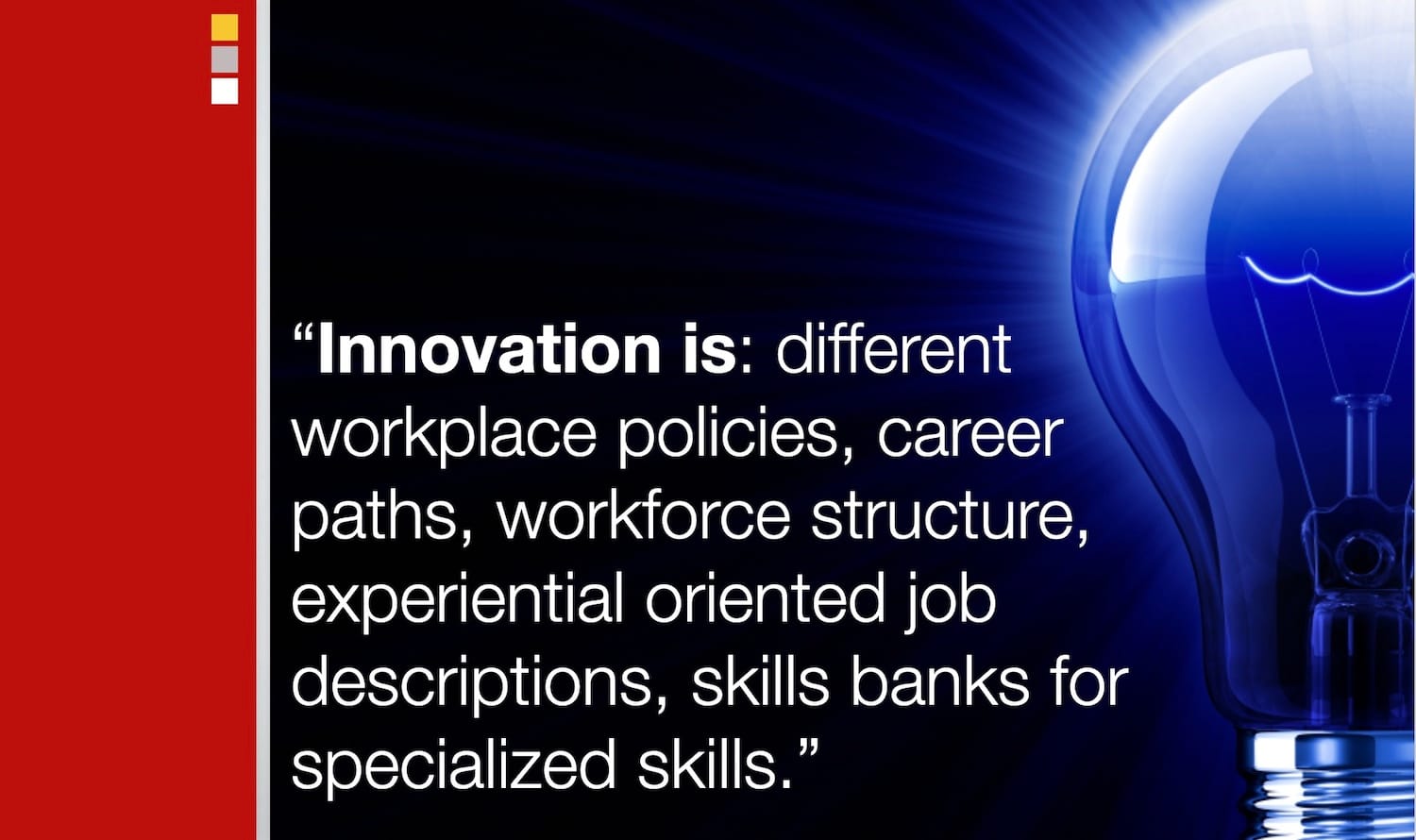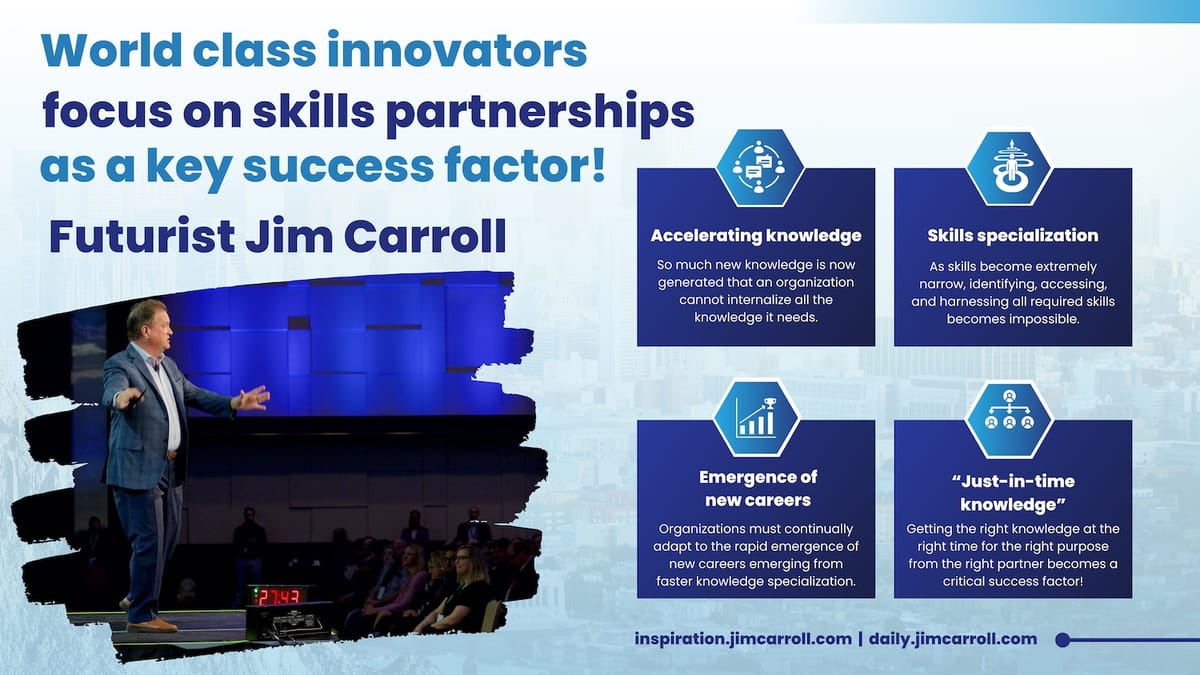"World class innovators focus on skills partnerships as a key success factor!" - Futurist Jim Carroll
Futurist Jim Carroll is running his Daily Inspiration series for March 11/18 on the theme of “What is it that World Class Innovators Do That Others Don’t Do?” The leadership ideas are based on an original keynote he gave early in 2009 after a client asked him to identify these issues. He developed this carefully curated list based on 15 years of observations of how his global clients responded to fast-paced change.
Organizations used to hire all the people they needed to do all the things that needed to be done. In a world of massive knowledge acceleration and specialization, this no longer makes sense - and indeed, is impossible. World-class innovators, as a result, pursue a strategy in which their ability to quickly form external knowledge partners will define their success going forward.
What I saw twenty years ago when compiling my list of world-class innovators was a group of companies who realized this reality - and innovated their way through it. World-class innovators realized early on that this business model of a structure that had all key skills in place was no longer possible. Instead, they realized they needed to evolve into a structure of ensuring continuous availability to what I have long come to call 'just-in-time knowledge.'
Mastering this skill is one of the most important success factors today. Think about it: these are the issues faced by organizations today:
- Accelerating knowledge: So much new knowledge is now generated that an organization cannot internalize all the knowledge it needs.
- Skills specialization: As skills become extremely narrow, identifying, accessing, and harnessing all required skills becomes impossible.
- Emergence of new careers: Organizations must continually adapt to the rapid emergence of new careers emerging from faster knowledge specialization.
- "Just-in-time knowledge": Getting the right knowledge at the right time for the right purpose from the right partner becomes a critical success factor!
My slides a the time caught the reality of the trends that were emerging in that context. They also took a look at what was happening with the Millenials entering the workforce for the first time:
- More than 50% would choose self-employment over a full-time job, given the decline of long-term job security - they would rather be responsible for their future!
- this new generation had little patience for career paths and job longevity, with most thinking that 2-5 years with a company would be a good long-term career
- one survey shows that for this very same generation, 67% were already thinking about looking for their next job on their very first day in a new job!

Corporate loyalty was on its deathbed! These were the trends emerging in the early 2000s, and I was witnessing the organizations that were responding to the reality of these trends seemed to have more success overall in hiring the required talent and skills.
What was the impact of combining these trends in the context of accelerating knowledge and skills specialization? I laid out the case for my audiences:
- massive specialization drives a supply-demand imbalance
- result: future workforce will expand and contract based on need
- access to specialized skills will be critical - and will define success
- Success comes from the ability to deliver rapid partnerships, structures, capabilities

And in that context, this quote grabbed from my research described the future of skills and talent:
….outsourcing will become less about cost containment and more about accessing the best skills and expertise….”
Asian Banker, December 2006
In other words, the concept of outsourcing was moving from being based on a cost reduction strategy ("let's save money by moving jobs overseas") and more focused on "how can we access the specialized global talent that we need to do the things that need to be done?" This was a massive shift, and world-class innovators were leading the way.
How? For those world-class innovators, the idea of workforce innovation was taking hold. It was becoming focused on the ability to pursue and innovate with different workplace policies, alternative career paths, changes to workforce structure, experientially oriented job descriptions, skills banks for specialized skills, and more.

The interesting thing is that all of these trends came together as the global pandemic enveloped the world; suddenly, workforce innovation was no longer just the purview of global innovation leaders, but was becoming mainstream - and in fact, necessary for survival.
Today, some organizations understand that relentless workforce and skills innovation is a key component of their overall innovation strategy, and you can see it in their success. Others still seem to cling to the command-and-control hierarchical business structure of the late 20th century - and in their actions, one can see the dinosaurs of a long-gone era lumber along in complacency!
Futurist Jim Carroll abandoned the traditional workforce structure in 1989, establishing his one career as a nomadic worker. His wife joined him in his home office 4 years later. The two of them have not had a regular job in that time span, and yet, have had tremendous career success.

